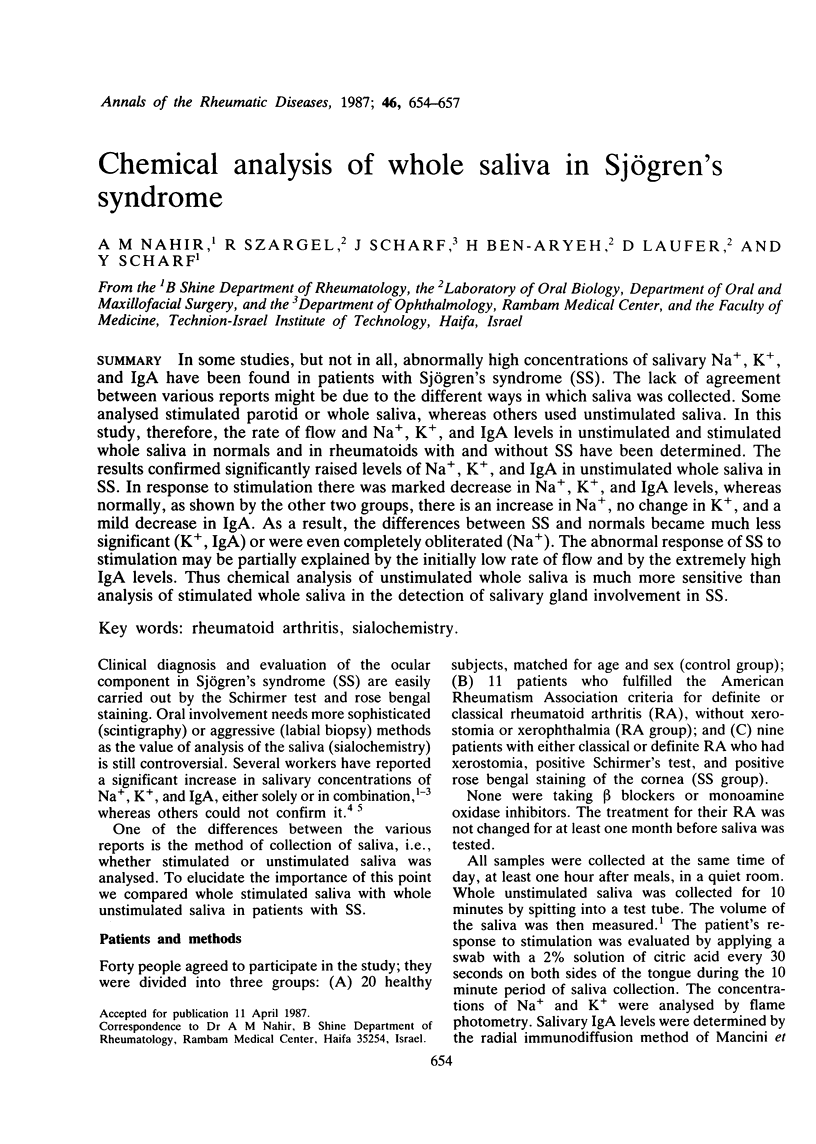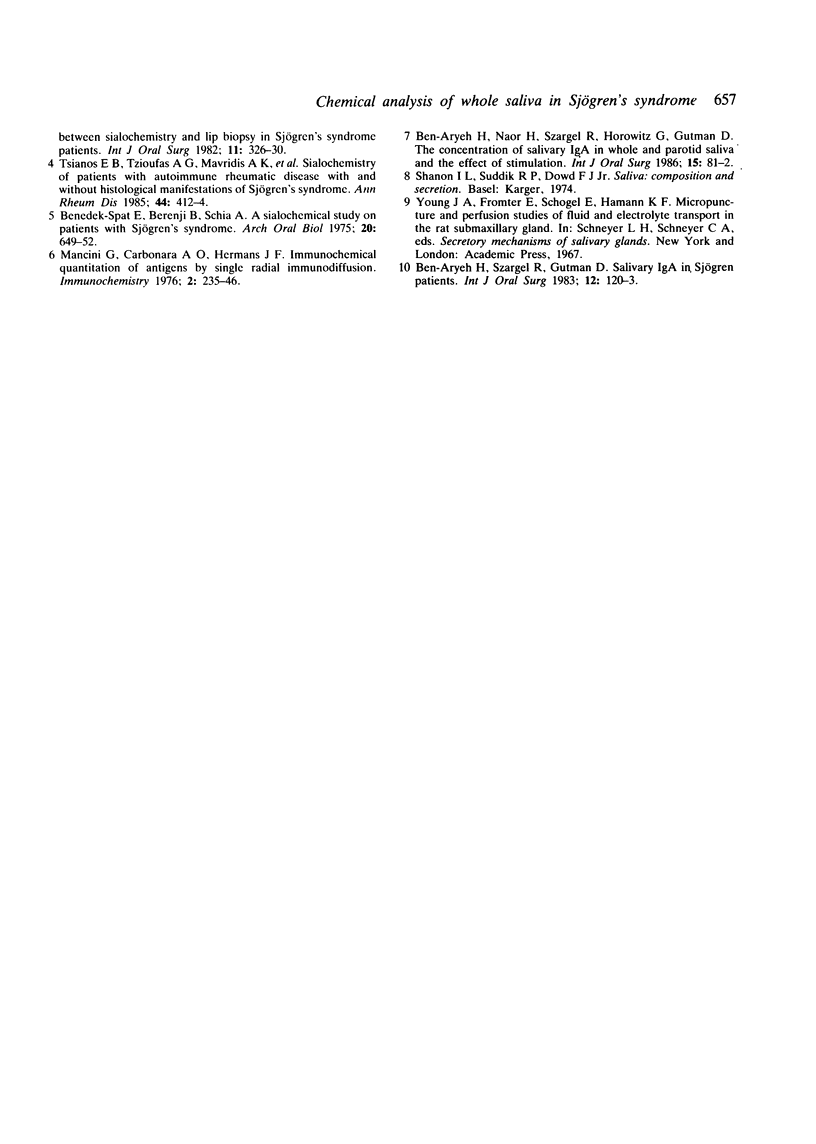Abstract
In some studies, but not in all, abnormally high concentrations of salivary Na+, K+, and IgA have been found in patients with Sjögren's syndrome (SS). The lack of agreement between various reports might be due to the different ways in which saliva was collected. Some analysed stimulated parotid or whole saliva, whereas others used unstimulated saliva. In this study, therefore, the rate of flow and Na+, K+, and IgA levels in unstimulated and stimulated whole saliva in normals and in rheumatoids with and without SS have been determined. The results confirmed significantly raised levels of Na+, K+, and IgA in unstimulated whole saliva in SS. In response to stimulation there was marked decrease in Na+, K+, and IgA levels, whereas normally, as shown by the other two groups, there is an increase in Na+, no change in K+, and a mild decrease in IgA. As a result, the differences between SS and normals became much less significant (K+, IgA) or were even completely obliterated (Na+). The abnormal response of SS to stimulation may be partially explained by the initially low rate of flow and by the extremely high IgA levels. Thus chemical analysis of unstimulated whole saliva is much more sensitive than analysis of stimulated whole saliva in the detection of salivary gland involvement in SS.
Full text
PDF



Selected References
These references are in PubMed. This may not be the complete list of references from this article.
- Ben-Aryeh H., Nahir M., Scharf Y., Gutman D., Laufer D., Szargel R. Sialochemistry of patients with rheumatoid arthritis. Electrolytes, protein, and salivary IgA. Oral Surg Oral Med Oral Pathol. 1978 Jan;45(1):63–70. doi: 10.1016/0030-4220(78)90224-4. [DOI] [PubMed] [Google Scholar]
- Ben-Aryeh H., Naon H., Szargel R., Horowitz G., Gutman D. The concentration of salivary IgA in whole and parotid saliva and the effect of stimulation. Int J Oral Maxillofac Surg. 1986 Feb;15(1):81–84. doi: 10.1016/s0300-9785(86)80014-x. [DOI] [PubMed] [Google Scholar]
- Ben-Aryeh H., Szargel R., Gutman D. Salivary IgA in Sjögren patients. Int J Oral Surg. 1983 Apr;12(2):120–123. doi: 10.1016/s0300-9785(83)80008-8. [DOI] [PubMed] [Google Scholar]
- Benedek-Spät E., Berényi B., Csiba A. A sialochemical study on patients with Sjögren's syndrome. Arch Oral Biol. 1975 Oct;20(10):649–652. doi: 10.1016/0003-9969(75)90132-6. [DOI] [PubMed] [Google Scholar]
- Mancini G., Carbonara A. O., Heremans J. F. Immunochemical quantitation of antigens by single radial immunodiffusion. Immunochemistry. 1965 Sep;2(3):235–254. doi: 10.1016/0019-2791(65)90004-2. [DOI] [PubMed] [Google Scholar]
- Nahir A. M., Aryeh H. B., Szargel R., Scharf Y., Gutman D., Blaustein Y., Scharf Y. Sialochemistry in evaluating bromhexine treatment of Sjögren's syndrome. Br Med J. 1979 Oct 6;2(6194):833–833. doi: 10.1136/bmj.2.6194.833. [DOI] [PMC free article] [PubMed] [Google Scholar]
- Spielman A., Ben-Aryeh H., Lichtig C., Szargel R., Gutman D., Scharf J., Nahir M., Scharf Y. Correlation between sialochemistry and lip biopsy in Sjögren's syndrome patients. Int J Oral Surg. 1982 Oct;11(5):326–330. doi: 10.1016/s0300-9785(82)80034-3. [DOI] [PubMed] [Google Scholar]


